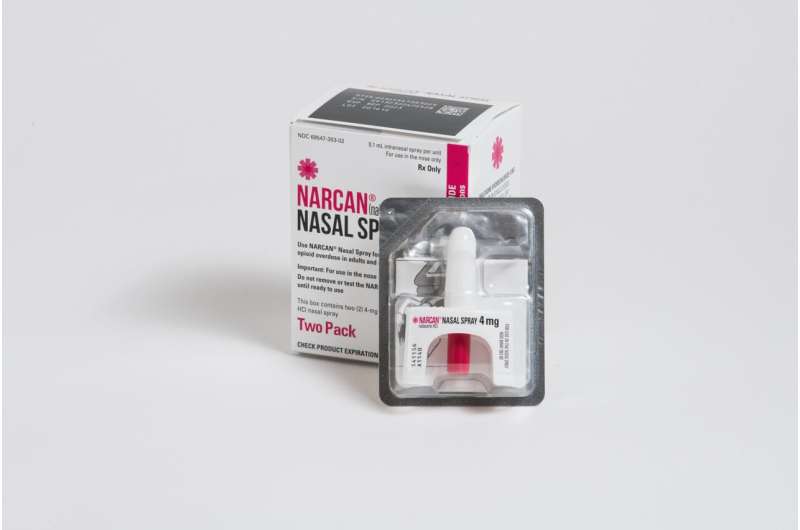This article has been reviewed according to Science X's editorial process and policies. Editors have highlighted the following attributes while ensuring the content's credibility:
fact-checked
peer-reviewed publication
trusted source
proofread
New guidance on take-home naloxone for community overdose responders

New guidance aimed at helping standardize community overdose response and take-home naloxone kits across Canada has been published in CMAJ (Canadian Medical Association Journal). The guidance is an important document to optimize the effectiveness of take-home naloxone to save lives.
The guidance was developed by a panel of experts, including people with lived experience of drug use and overdose response, front-line and harm-reduction workers, public health professionals, clinicians and academics with expertise in harm reduction across Canada. It is targeted toward policy-makers who develop and fund take-home naloxone programs, as well as distribution sites, harm-reduction organizations and workers, community overdose responders, clinicians and public health professionals.
As published evidence on take-home naloxone is of low quality, clinical and community expertise was especially important.
"The development of Canadian take-home naloxone program guidance was led by BC Center for Disease Control in a truly collaborative process with diverse stakeholders from across the country," said Dr. Jane Buxton, with the BC Center for Disease Control, Vancouver, BC and nominated principal investigator. "We found the quality of published data was low, so the insights of the affected community (with many years of experience of overdose response with naloxone) was invaluable in developing guidance."
The guidance makes three key recommendations:
- Take-home naloxone programs should, where possible, offer both intramuscular and intranasal formulations of naloxone.
- Kits should include a recognizable carrying case, breathing mask, non-latex gloves, instructions on how to administer naloxone, naloxone and supplies to administer naloxone.
- Trained responders should provide rescue breathing as part of the response in addition to verbal and physical stimulation, calling emergency medical services, administering naloxone and providing cardiopulmonary resuscitation if required.
"The most important considerations in overdose response are the preservation of life and mitigation of harms," write the authors.
More information: Guidance on take-home naloxone distribution and use by community overdose responders in Canada, Canadian Medical Association Journal (2023). DOI: 10.1503/cmaj.230128


















